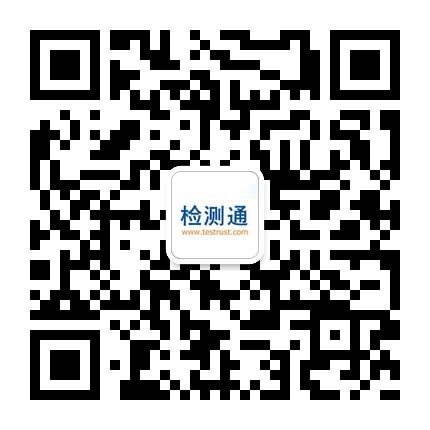 检测认证人脉交流通讯录
检测认证人脉交流通讯录
ASTM D3575-2000_烯烃聚合物制软质泡沫材料的试验方法
这真不是您需要的服务?
-
对应法规:ASTM D 3575-2000
CNAS认可项目:是 ASTM D3575-2000_烯烃聚合物制软质泡沫材料的试验方法
Designation: D 3575 ± 00
Standard Test Methods for
Flexible Cellular Materials Made From Ole®n Polymers1
This standard is issued under the ®xed designation D 3575; the number immediately following the designation indicates the year of original adoption or, in the case of revision, the year of last revision. A number in parentheses indicates the year of last reapproval. A superscript epsilon (e) indicates an editorial change since the last revision or reapproval.
- Scope
- These test methods apply to ¯exible closed cell materi-als made from ole®n polymers or blends of ole®n polymers with other polymers as de®ned in Section 3.
- This test method covers test procedures only. Product requirements are outlined in Speci®cation D 4819.
- Unless speci®cally stated otherwise, by agreement be-tween the purchaser and supplier, all tests shall be performed in accordance with the test methods speci®ed in this standard.
- The values stated in SI units are to be regarded as the standard.
- This standard does not purport to address all of the safety concerns, if any, associated with its use. It is the responsibility of the user of this standard to establish appro-priate safety and health practices and determine the applica-bility or regulatory limitations prior to use.
- Referenced Documents
- ASTM Standards:
C 177 Test Method for Steady-State Heat Flux Measure-ments and Thermal Transmission Properties by Means of the Guarded-Hot-Plate Apparatus2
C 518 Test Method for Steady-State Heat Flux Measure-ments and Thermal Transmission Properties by Means of the Heat Flow Meter Apparatus2
D 412 Test Methods for Vulcanized Rubber and Thermo-plastic Rubbers and Thermoplastic ElastomersÐTension3 D 624 Test Method for Tear Strength of Conventional
Vulcanized Rubber and Thermoplastic Elastomers3
D 1056 Speci®cation for Flexible Cellular MaterialsÐ Sponge or Expanded Rubber4
D 1349 Practice for RubberÐStandard Temperatures for Testing3
D 1596 Test Method for Absorbing Shock Cushioning Characteristics of Package Cushioning Materials5
D 1667 Speci®cation for Flexible Cellular MaterialsÐ
- These test methods are under the jurisdiction of ASTM Committee D20 on Plastics and are the direct responsibility of Subcommittee D20.22 on Cellular Plastics.
Current edition approved Aug. 10, 2000. Published November 2000. Originally published as D 3575 ± 77. Last previous edition D 3575 ± 93.
- Annual Book of ASTM Standards, Vol 04.06.
- Annual Book of ASTM Standards, Vol 09.01.
- Annual Book of ASTM Standards, Vol 08.01.
- Annual Book of ASTM Standards, Vol 15.09.
Vinyl Chloride Polymers and Copolymers (Closed-Cell Foam)4
D 2863 Test Method for Measuring the Minimum Oxygen Concentration to Support Candle-Like Combustion of Plastics (Oxygen Index)6
D 4483 Practice for Determining Precision for Test Method Standards in the Rubber and Carbon Black Industries3
D 4819 Speci®cation for Flexible Cellular Materials Made from Polyole®n Plastics7
F 355 Test Method for Shock-Absorbing Properties of Play-ing Surface Systems and Materials8
3. Terminology
3.1 De®nitions of Terms Speci®c to This Standard:
- blendÐmixture of ole®n polymers with other mono-mer(s) or polymer(s) in which at least 51 mass percent is the ole®n polymer.
- cellular material, ¯exibleÐa cellular organic poly-meric material that will not rupture when a specimen 200 by 25 by 25 mm (8 by 1 by 1 in.) is bent around a 25-mm (1-in.) diameter mandrel at a uniform rate of one lap in 5 s at a temperature between 18 and 29°C.
- constant compression creepÐthe time-dependent change in thickness of a material under a constant compressive stress or compression force.
- ole®n polymersÐpolymers made by the polymeriza-tion of ole®ns or copolymerization of ole®ns with other monomers, the ole®ns being at least 51 mass percent.
- Summary of Test Methods
- Table 1 contains a list of all the assigned suffix letters that may be used in describing the cellular products covered by these test methods.
- These test methods do not contain test methods for all the suffix letters listed in Table 1. Where the test method is not included, it shall be arranged between the purchaser and supplier.
- Test methods included in this standard are indicated in Table 1 by showing the applicable section numbers after the suffix letter.
- In cases involving referee decisions, SI units shall be
used.
- Annual Book of ASTM Standards, Vol 08.02.
- Annual Book of ASTM Standards, Vol 08.03.
- Annual Book of ASTM Standards, Vol 15.07.
Copyright © ASTM, 100 Barr Harbor Drive, West Conshohocken, PA 19428-2959, United States.
--`,`,``,,,,`,,,`,,`,,`-`-`,,`,,`,`,,`---
1
Reproduced by IHS under license with ASTM
Document provided by IHS for TRIODEM TECHNICAL SERVICES LTD, Order Number
01410121 on 2004/2/23 12:28:21 GMT. No reproduction or networking permitted.
D 3575
TABLE 1 Suffix Letter Designations
article is of complicated shape or of varying thickness, and
NOTE 1ÐThese suffix letters have been assigned by Subcommittee
these factors affect the physical properties of the specimens.
Also, the apparent density is affected by the number of cut
D11.33
and are consistent with those in Speci®cations
D 1056 and
D 1667.
surfaces as opposed to the number of skin-covered surfaces on
the test specimen.
Suffix
Property
Section
Letter
6.4 When the ®nished product does not lend itself to testing
A
Heat resistance
10-16
or to the taking of test specimens because of complicated
B
Compression set under constant de¯ection
shape, small size, metal or fabric inserts, solid covers, adhesion
C
Ozone or weather resistance
to metal, or other reasons, prepare standard test sheets. When
D
Compression de¯ection
17-23
differences due to the difficulty in obtaining suitable test
E
Oil resistance
F
Low temperature
24
specimens from the ®nished part arise, the manufacturer and
G
Tear resistance
purchaser may agree on acceptable deviations. This can be
H
Flex resistance
done by comparing the results of standard test specimens and
I
Not assigned because of similarity to
J
numeral 1
those obtained on actual parts.
Abrasion resistance
6.5 If the material to be tested is anisotropic, prepare the test
K
Adhesion capability
L
Water absorption
25-29
specimens so as to measure the property in the direction of
M
Flammability resistance
31
interest in the application.
- Impact resistance
- Electrical properties
P
Staining resistance
7. Conditioning
Q
Not assigned because of similarity to
7.1 Conduct tests under known conditions of temperature
letter O
and humidity or as speci®ed in the individual test procedure. In
R1
Resilience
R2
Energy absorption
32
case of dispute, conduct the test at a temperature of 23 6 2°C
S
Thermal stability
33-39
(73.4 6 3.6°F) and in an atmosphere of 50 6 5 % relative
T
Tensile strength and elongation
40
humidity. The product shall be conditioned, unde¯ected, and
U
Not assigned
V
Thermal conductivity
41 and 42
undistorted, at the temperature and humidity of test for at least
W
Density
43
24 h before being tested.
X
Not assigned
7.2 It is recommended, for referee purposes, that all tests
Y
Not assigned
Z
Special requirements
45-50
shall be performed 96 h or more after the foam has been
AA
Buoyancy
manufactured.
BB
Constant compressive creep
51-58
CC
Dynamic cushioning
59
8. Measurement of Test Specimens
DD
Open cell
EE
Not assigned
8.1 Measure dimensions up to and including 25 mm (1 in.)
FF
Water vapor transmission
using a dial-type gage with a minimum foot area of 650 mm2
(1 in.2). Pressure on the foot shall be held to 190 6 50 Pa
5. Signi®cance and Use
(0.028 6 0.007 psi).
5.1
The test procedures provide a standard
method of
NOTE 1ÐWhere foam is appreciably compressed by this test method,
obtaining data for research and development, quality control,
foot area and loading shall be as agreed upon between the purchaser and
acceptance and rejection under speci®cations,
and special
the supplier.
NOTE 2ÐThickness of materials having irregular surface characteristics
purposes.
shall be measured as agreed upon between the purchaser and the supplier.
5.2
The data obtained by these test methods are applicable
8.2 Dimensions over 25 mm (1 in.) may be measured with
to the material under conditions of the particular test and are
a dial gage, scale, or tape. Take care not to distort the test
not necessarily the same as obtained in other environments or
specimen.
use conditions.
8.3 The scale, tape, or gage shall be graduated to permit
6. Sampling
measurements within 61 % of the dimension to be measured.
6.1 When possible, use the completed manufactured prod-
8.4 Results reported shall be the average of a minimum of
three equally spaced measurements of length and width and for
uct for the tests speci®ed. Randomly select representative
thickness shall be the average of the center and four equally
samples of the lot being examined, as required.
spaced measurements around the perimeter of the specimens.
6.2
Extruded or molded shapes or sizes too small for cutting
standard test specimens are difficult to classify or test by these
9. Precision
test methods and will usually require special testing procedures
9.1 The repeatability standard deviations for each test
or the use of standard test sheets.
6.3
When it is necessary or advisable to obtain test speci-
method has been determined. The reproducibility of these test
mens from the article, as in those cases where the entire sample
methods is being determined and will be available on or before
is not required or adaptable for testing, specify the method of
April 2005.
cutting and the exact position from which specimens are to be
NOTE 3ÐThe repeatability study was performed on two materials in
taken. The apparent density and the state of crosslinking may
two laboratories. For density (Method B), buoyancy, and compression
vary in different parts of the ®nished product, especially if the
creep, the material tested was a typical 64-kg/m3 density, crosslinked
2
--`,`,``,,,,`,,,`,,`,,`-`-`,,`,,`,`,,`---
Reproduced by IHS under license with ASTM
Document provided by IHS for TRIODEM TECHNICAL SERVICES LTD, Order Number
01410121 on 2004/2/23 12:28:21 GMT. No reproduction or networking permitted.
D 3575
closed-cell ole®n. For density (Method A), compression de¯ection, thermal stability, and water absorption, the material tested was a typical
3
32-kg/m density, crosslinked closed-cell ole®n.
Suffix Tests
Suffix BÐCompression Set Under Constant De¯ection
10. Scope
10.1 This test method covers the de¯ection of the foam specimen under a compressive force and under speci®ed conditions of time and temperature, then noting the effect on the thickness of the specimen after releasing the compressive force.
11. Apparatus
11.1 Compression Device, consisting of two or more ¯at plates arranged so the plates are held parallel to each other by bolts or clamps, and the space between the plates is adjustable
--
test specimens shall have parallel top and bottom
12.1 The-`-`,`,``,,,,`,,,`,,`,,`
to the required de¯ection thickness by means of spacers.
12. Test Specimens
`,,`,,`,`,,`
and essentially perpendicular sides.
surfaces
12.2 Specimens shall be 50 by 50 by 25 mm (2 by 2 by 1 in.) --- unless otherwise speci®ed. Specimens less than 25 mm in
thickness shall be plied up, without the use of an adhesive, to produce a total thickness of 25 mm.
Cd
=
compression set expressed as a percent of the origi-
nal thickness,
to
=
original thickness, mm (in.), and
tf
= thickness of the specimen after the speci®ed recovery
period, mm. (in.)
- Report
- Report the average compression set value, of the three specimens tested, for each sample, except as noted in 14.1.
- Precision
- The repeatability standard deviation has been deter-mined to be 2.06. The reproducibility of this test method is being determined and will be available on or before April 2005. Values of data ranged from 14.36 to 21.37.
Compression Set
1
14.36
2
14.89
3
15.03
4
15.2
5
15.22
6
15.45
7
15.66
8
16.94
9
17.45
10
21.37
Average
16.157
Standard deviation
2.06
NOTE 4ÐTo obtain accurate data when testing foams with large cells or irregular surfaces, or both, larger samples approximately 100 by 100 by 25
- (4 by 4 by 1 in.) are recommended.
- Number of Specimens
- Test three specimens for each sample. The values reported shall be the mean of those observed. If any value deviates more than 20 % from this mean, test two additional specimens and report the mean for all ®ve values.
- Procedure
Suffix DÐCompression De¯ection (Also called Load De¯ection or Compressive Strength)
- Scope
- This test method covers the measurement of the force necessary to produce a 25 % compression over the entire top area of the foam specimen.
NOTE 6ÐCompression de¯ection tests other than at 25 % may be speci®ed as agreed upon between the purchaser and the supplier.
19. Apparatus
14.1
Perform the entire test procedure at 23 6 2°C (73.4 6
19.1 An apparatus shall be provided having a ¯at compres-
3.6°F) and in an atmosphere of 50 6 5 % relative humidity.
sion foot, larger than the specimen to be tested, connected to a
NOTE
5ÐSee Practice D 1349 if conditions other than these are desired.
force-measuring device and mounted in a manner such that the
product or specimen can be de¯ected (compressed) at a speed
14.2
Measure the test specimen original thickness (to) in
of 0.2 to 4 mm/s (0.5 to 2 in./min). The apparatus shall be
accordance with the procedure in Section 8.
arranged to support the specimen on a level horizontal plate.
14.3
Place the test specimen in the apparatus and compres-
20. Test Specimens
sively de¯ect it to 50 % of its thickness.
14.4
Allow the test specimen to remain de¯ected in the
20.1 The test specimen shall be a right cylinder with parallel
apparatus for 22 h.
top and bottom surfaces. The thickness shall be no greater than
14.5
Remove the specimen from the test apparatus at the
75 % of the minimum top dimension.
end of the 22-h period. Measure the ®nal thickness ( tf) after 24
20.2 Specimens shall be a minimum of 2500 mm2 (4 in.2) in
h of recovery.
area and have a minimum thickness of 25 mm (1 in.).
15. Calculation
Specimens less than 25 mm thick shall be plied up, without the
use of cement, to a minimum of 25 mm.
15.1
Calculate the constant de¯ection compression
set,
NOTE 7ÐSpecimens less than 25 mm (1 in.) thick may be tested
expressed as a percentage of the original thickness, as follows:
without being plied up, but the thickness must be speci®ed.
Cd 5
~t o ± tf!
3 100
(1)
21. Number of Specimens
to
where:
21.1 Test three specimens for each sample. The values reported shall be the mean of those observed. If any value
Reproduced by IHS under license with ASTM
3
Document provided by IHS for TRIODEM TECHNICAL SERVICES LTD, Order Number 01410121 on 2004/2/23 12:28:21 GMT. No reproduction or networking permitted.
29.1 Test three specimens for each sample. The values
reported shall be the mean of those observed. If any value
(2)
deviates more than 20 % from this mean, test two additional specimens and report the mean for all ®ve values.
D 3575
deviates more than 20 % from this mean, test two additional specimens and report the mean for all ®ve values.
- Procedure
- Place the specimen centered in the line of the axial load on the supporting plate of the apparatus.
- Bring the compression foot into contact with the specimen and determine the thickness after applying a total pretest-pressure of 190 6 50 Pa (0.028 6 0.007 psi) to the specimen area. Compress the specimen 25 6 0.5 % of this thickness at 12.5 mm/min (0.5 in./min) and take the reading of the load immediately, unless another speed is speci®ed.
NOTE 8ÐWhere foam is appreciably compressed by this pretest-pressure, foot area and loading shall be as agreed upon between the purchaser and the supplier.
- Calculation
- Calculate the 25 % compression de¯ection force, per unit area of specimen, expressed as kilopascals (or pounds-force per square inch), as follows:
F
CD 5 A
Suffix GÐTear Resistance, Test Method D 624
- Test Method D 624
- Die C shall be used.
- Test the material at the thickness to be supplied, unless otherwise arranged by agreement between the purchaser and the supplier.
Suffix LÐWater Absorption
- Scope
- This test method covers the measurement of the water absorbed by ole®n polymer ¯exible cellular materials during submersion under pressure.
- Test Specimens
- Test specimens shall be 100 by 100 mm (4 by 4 in.) by the thickness of material being supplied. The specimen may or may not have natural skins on top, bottom, or both surfaces.
- Number of Specimens
where:
CD = compression de¯ection force per unit of specimen area, kPa (psi),
F = force required to compress the specimen 25 % of the thickness as measured in 8.2, N (lbf), and
- = specimen compression contact surface area, m2 (in.2).
- Report
- Report the average thickness after pretest pressure and the average compression de¯ection, for the three specimens tested, in kilopascals (or pounds-force per square inch), re-quired for 25 % compression, except as noted in 22.1.
- Precision
- The repeatability standard deviation has been deter-mined to be 1.74. The reproducibility of this test method is being determined and will be available on or before April 2005. Values of data ranged from 34.61 to 40.61.
Compression De¯ection, kPa
1
34.61
2
37.16
3
38.82
4
38.82
5
38.96
6
39.03
7
39.72
8
39.78
9
40.20
10
40.61
Average
38.77
Standard deviation
1.74
- Procedure
- Measure the area of the cut surfaces in accordance with Section 8 and calculate the area of the cut surfaces.
- Weigh the specimens and submerge under a 3-m (10-ft) head of water (equal to 30 kPa or 4.35 psi) at room temperature (18 to 29°C (65 to 90°F)) for 48 h. Then place the specimens in a stream of air for the minimum time required to remove visible water from the surfaces and reweigh.
- Calculation
- Calculate the water absorption, expressed in kg/m2 (lb/ft2) of cut surfaces (surfaces without skin or rind) as follows:
Water Absorption 5
W2<
-

检测通手机版 
检测通官方微信
检测通QQ群



